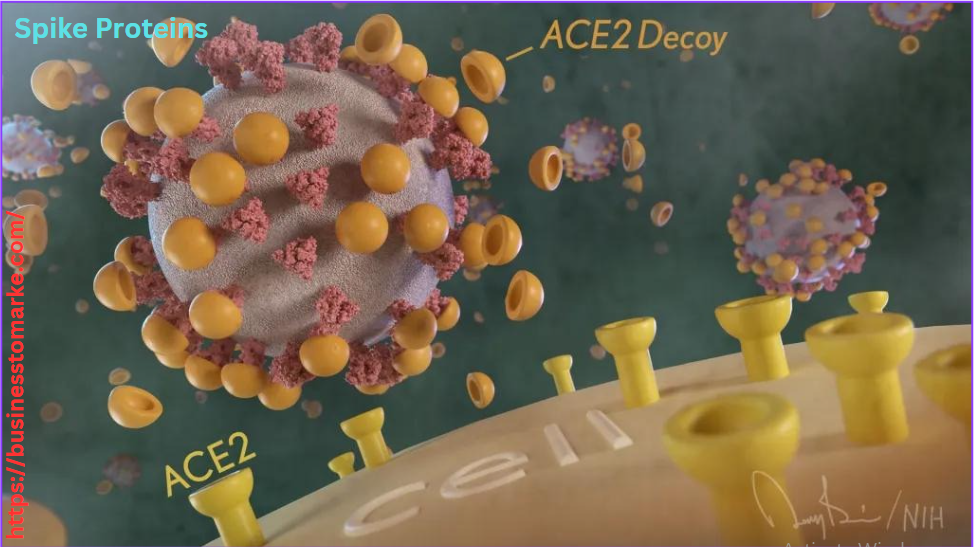How Spike Proteins Are Secretly Killing You?

Introduction of Spike Proteins
Spike proteins might sound like something out of a sci-fi movie, but they’re very real and crucial to understanding how certain viruses, like the one causing COVID-19, operate. You might have heard a lot of chatter about spike proteins lately, especially in the context of vaccines and viral infections. Let’s dive into what they are, how they function, and the concerns surrounding their impact on our health.
What Are Spike Proteins?
Spike proteins are the protruding structures on the surface of viruses that allow them to enter and infect human cells. Think of them as the keys that unlock our cells, making it possible for viruses to wreak havoc inside our bodies.
The Role of Spike Proteins in Viruses
These proteins are not just passive parts of a virus. They are active players in the infection process, crucial for the virus to bind to and penetrate our cells. Without them, viruses would be much less efficient at causing disease.
Understanding Spike Proteins
Structure of Spike Proteins
Spike proteins are complex molecules made up of several subunits. They have a unique shape that allows them to attach to specific receptors on the surface of human cells. This structure is what makes them so effective at helping viruses infect us.
Function in Viral Infection
Once a spike protein binds to a cell receptor, it undergoes a structural change that allows the viral membrane to fuse with the cell membrane. This fusion lets the virus enter the cell and begin the process of replication.
Comparison with Other Viral Proteins
Not all viral proteins are created equal. Spike proteins are unique in their ability to mediate entry into cells, whereas other proteins might be involved in replication or evading the immune system. This makes spike proteins a prime target for both the body’s immune response and vaccine development.
Spike Proteins in COVID-19
The Role in SARS-CoV-2
In the case of SARS-CoV-2, the virus that causes COVID-19, the spike protein binds to the ACE2 receptor on human cells. This interaction is the first step in the virus’s entry into the body, leading to infection.
How COVID-19 Vaccines Use Spike Proteins
COVID-19 vaccines, like those from Pfizer and Moderna, use spike proteins to train the immune system. They introduce a harmless piece of the spike protein to the body, prompting an immune response that will recognize and fight off the actual virus if encountered later.
Myths and Facts about COVID-19 Spike Proteins
There are many myths about these spike proteins, especially concerning vaccines. Some believe they are toxic or can alter human DNA. However, scientific evidence supports that the spike proteins used in vaccines are safe and effective at preventing severe illness.
Mechanisms of Harm
How Spike Proteins Interact with Human Cells
Spike proteins target specific receptors on human cells, such as the ACE2 receptor. This interaction can disrupt normal cell function and trigger a cascade of harmful effects.
Potential Toxicity of Spike Proteins
There is ongoing research into the potential toxicity of spike proteins. Some studies suggest that they might cause inflammation and other harmful effects, especially if produced in large quantities.
Immune System Response to Spike Proteins
The immune system recognizes spike proteins as foreign invaders. This response is generally protective, but in some cases, it can become overactive, leading to conditions like cytokine storms, which can cause severe inflammation and damage.

Health Impacts
Cardiovascular Issues
There have been reports linking spike proteins to cardiovascular problems, such as myocarditis and blood clots. While these cases are rare, they highlight the importance of monitoring potential side effects.
Neurological Effects
Some individuals have reported neurological symptoms after infection with COVID-19, such as brain fog and headaches. It’s hypothesized that spike proteins might play a role in these symptoms by affecting the nervous system.
Respiratory Problems
Given that SARS-CoV-2 primarily targets the respiratory system, spike proteins are directly involved in causing respiratory issues. This includes symptoms like shortness of breath and severe pneumonia in critical cases.
Scientific Evidence
Studies on Spike Protein Toxicity
Various studies are examining the effects of spike proteins on the body. Some have found evidence of inflammation and tissue damage, though these findings are still under investigation and require more research for conclusive results.
Real-World Observations
Real-world data from the pandemic provides valuable insights. For instance, vaccine surveillance systems track adverse effects, helping to identify any potential issues related to spike proteins in vaccines.
Expert Opinions
Experts generally agree that while spike proteins are a concern, the benefits of vaccines far outweigh the risks. Continuous research and monitoring are crucial to ensure safety and efficacy.
Public Misconceptions
Common Misunderstandings
Many people misunderstand the role and impact of spike proteins. Some believe they are inherently dangerous or that vaccines containing them are harmful.
Misinformation and Its Spread
Misinformation spreads rapidly, especially on social media. This has led to widespread fear and confusion about spike proteins and their effects.
Debunking Popular Myths
It’s essential to debunk myths with factual information. For instance, spike proteins do not alter DNA, nor do they remain in the body indefinitely after vaccination.
Preventive Measures
Vaccination Benefits and Risks
Vaccination remains the most effective way to protect against severe COVID-19. Understanding the risks and benefits helps people make informed decisions.
Boosting Natural Immunity
Aside from vaccines, maintaining a healthy lifestyle can boost natural immunity. This includes proper nutrition, regular exercise, and sufficient sleep.
Safe Practices During Pandemics
Following public health guidelines, such as wearing masks and practicing good hygiene, can reduce the risk of infection and mitigate the spread of the virus.
Future Outlook
Ongoing Research
Research on spike proteins and their effects is ongoing. Scientists are continually learning more about how these proteins work and how to mitigate their potential harms.
Potential Treatments
New treatments targeting spike proteins are being developed. These could offer additional ways to combat viruses like SARS-CoV-2.
Long-Term Health Monitoring
Long-term monitoring of health outcomes in people exposed to spike proteins, whether through infection or vaccination, is crucial. This helps ensure any long-term effects are identified and addressed.
Conclusion
Spike proteins play a crucial role in viral infections, particularly with COVID-19. While they are necessary for the virus to infect cells, they also pose potential risks. Understanding these risks and how to mitigate them is essential. Vaccines, despite some concerns, remain a critical tool in fighting the pandemic. Ongoing research and public education are vital to dispelling myths and ensuring public health.




Leave a Comment